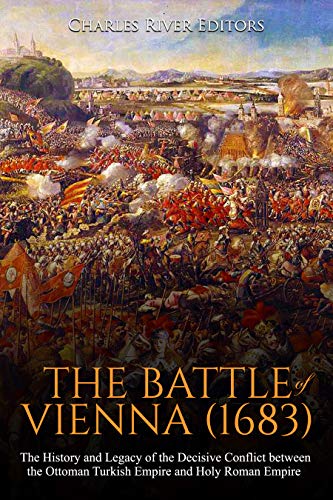The Battle of Vienna (1683): The History and Legacy of the Decisive Conflict between the Ottoman Turkish Empire and Holy Roman Empire
*Includes pictures*Includes online resources and a bibliography for further reading*Includes a table of contents “Ours are treasures unheard of . . . tents, sheep, cattle and no small number of camels . . . it is victory as nobody ever knew before, the enemy now completely ruined, everything lost for them. They must run for
*Includes pictures
*Includes online resources and a bibliography for further reading
*Includes a table of contents
“Ours are treasures unheard of . . . tents, sheep, cattle and no small number of camels . . . it is victory as nobody ever knew before, the enemy now completely ruined, everything lost for them. They must run for their sheer lives . . . General Starhemberg hugged and kissed me and called me his saviour.” – Polish King John III Sobieski
There are certain events that are famous not so much in themselves, noteworthy as they might be, but on account of their role in the context of history. Seismic shifts pivot upon the outcome of such events, and many of them come from battles, for it is an unfortunate but irrefutable fact of history that humanity is shaped by the force of arms. Salamis, Hastings, Agincourt, Waterloo, Sedan, and Stalingrad all fit into this category, and the 1683 Battle of Vienna or Kahlenberg (named after a hill near the city) can also, with eminent justification, be placed in the list of era-changing conflicts. For nearly 1,000 years, there had been a clash for the souls, hearts, and bodies of societies across Europe, Africa, and Asia.
The conflict between Christianity and Islam has been one of the defining factors in Europe and the Middle East, and while this dichotomy might be an excessively simple and incomplete explanation, there is no doubt that it has generated the world today. From Arabia, Islam surged forth onto the world stage in the 7th century as a religion carried by the force of arms. By the middle of the 8th century, the Islamic Caliphate had conquered the Levant, parts of North Africa, and even parts of Spain, all regions which had converted to Christianity in the previous three centuries. An Islamic invasion of France was turned away at the Battle of Poitiers in 732, and a Western counter-offensive known as the Reconquista lasted about 700 more years. Away from Europe, Christian and Muslim forces fought the Crusades around the Holy Land.
Toward the end of the 17th century, the preeminent Islamic power in the world was the Ottoman Empire. From lowly beginnings as a vassal of the Anatolian Sultanate of Rum Osman I, from whom the empire was named, it expanded into the lands of the Christian Byzantine Empire, and by 1683, the year of the Battle of Vienna, the Ottomans ruled Asia Minor, the Middle East (with the exception of Iran), northern Africa to the borders of Morocco, the Balkan Peninsula up to the lands of modern Poland, as well as portions of Poland, Ukraine, Crimea, and Georgia. The sultan was styled “His Imperial Majesty the Padishah (Emperor), Commander of the Faithful and Successor to the Prophet of the Lord of the Universe.” He was considered by his subjects to be the Caliph, the supreme leader of the faithful throughout the world. The duty of holy jihad was vested by the umma in his hands, and the sultans had successfully overpowered the forces of the Christian princes time and time again.
The long conflict between the Habsburgs and the Ottomans would finally come to a head in 1683 outside the city of Vienna, the center of Habsburg power in central Europe. It would be no exaggeration to say that Vienna was one of the most important battles not only in the conflict between Islam and Christendom, but in the entire history of the world. If the Habsburgs had lost that battle, it is highly likely that Islamic civilization rather than Christian would dominate much of Europe.
The Battle of Vienna (1683): The History and Legacy of the Decisive Conflict between the Ottoman Turkish Empire and Holy Roman Empire chronicles the dramatic siege, and how the Christian forces turned back the Ottomans. Along with pictures of important people, places, and events, you will learn about the battle like never before.
Bestsellers 2021
Auto Amazon Links: No products found.







Comments
Comments are disabled for this post.